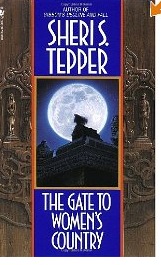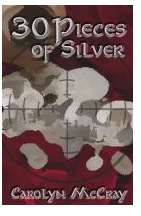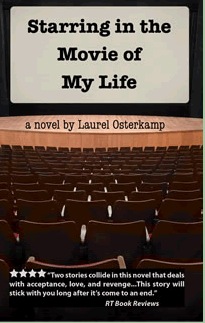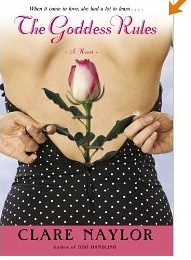Things I Love Right Now
Nail Lacquers, British musicians, and a British mini-series. Three things I’me loving right now.
First up is butter London, again. Love, love, love their Three Free nail polishes. They’ve got a fantastic new sparkly shade out called “No More Waity, Katy” in honor of the soon-to-be royal bride, Kate Middleton. And I love this luxe-grunge look from the runways of Fashion Week.
But I think what I love the most right now from butter London is the Matte Finish Top Coat. Seriously.
I put that top coat on over my Scoundrel color over the weekend. The look is subtle but trendy. I love the color. And it has stayed on without chipping despite constant pecking at a keyboard and numerous other activities that would have decimated a regular mani. So butter London stays in my love list, even if I do have to order online.
Another thing I’m loving right now? Adele’s new album, 21. “Rolling in the Deep” is getting all the radio play right now, but it was “Someone Like You” that got me hooked. This performance from the Brit awards is a perfect example why. The girl has some pipes. Both of her albums, 19 and 21, are completely worth the purchase price.
Speaking of music, I’m also completely in love with Mumford and Sons’ “Sigh No More” album. I was a fan before the Grammy’s. I’ve told more than one friend that I adore that album. It is rare to find one where I like every song, but Sigh No More delivers. And if you haven’t discovered the lads yet, this Grammy Performance showcases them well.
I’ve also been completely sucked in by a PBS Masterpiece Theater show. Downton Abbey. Have you heard of it yet? Everyone I know who has seen it, loves it. Set in England on the cusp of World War 1, the series explores the lives of the Crawley family and their servants as they work to secure the inheritance of the Crawley fortune. Set against the backdrop of social change that was coming to the British aristocracy and working class, along with the advent of women’s rights, Downton Abbey seduces the viewer. The intricacies of the relationships between the family and servants, the jealousies and societal convention leave you just wanting more, more, more. Which, fortunately, we’ll get sometime later this year, from what I understand.
So, that’s it for things I love right now… what’s on your list?
The Gate To Women’s Country
 I first read Sheri S. Tepper’s The Gate To Women’s Country during a Dean’s Honors Seminar on Utopian societies when I was a senior in college.
I first read Sheri S. Tepper’s The Gate To Women’s Country during a Dean’s Honors Seminar on Utopian societies when I was a senior in college.
It was the first book of the genre I had read. I was blown away by the ideas expressed in this book. The Gate To Women’s Country is set three hundred years after an apocalypse. In the aftermath of what are called the “convulsions” two societies have formed. From Publisher’s Weekly: Tepper’s finest novel to date is set in a post-holocaust feminist dystopia that offers only two political alternatives: a repressive polygamist sect that is slowly self-destructing through inbreeding and the matriarchal dictatorship called Women’s Country. Here, in a desperate effort to prevent another world war, the women have segregated most men into closed military garrisons and have taken on themselves every other function of government, industry, agriculture, science and learning. The resulting manifold responsibilities are seen through the life of Stavia, from a dreaming 10-year-old to maturity as doctor, mother and member of the Marthatown Women’s Council. As in Tepper’s Awakeners series books, the rigid social systems are tempered by the voices of individual experience and, here, by an imaginative reworking of The Trojan Woman that runs through the text.
Recent events making the news prompted me to re-read this book. Neither of these societies is a true Utopia, but Tepper presents some valid points. Women are at our best when we’re educated. When we’re sovereign over our own mind, bodies, and spirits. When we’re free to make whatever choice is right for us- to be single, to be a wife. To be a mother, or to not. To hold a paying job or to be a stay-at-home mom. To believe that God, if we believe in God, does not hate women and does not think us weak.
Warning- Spoilers below. If you don’t want to know anything about what you might come across in the book if you choose to read it, stop reading now. Otherwise, read on.
Tepper presents some interesting ideas. Are women inherently less violent? I don’t think that’s the case. But I do think that women have different priorities on when violence is appropriate. In Women’s Country, if the men of the garrison choose to go to war with another garrison, it is hand to hand combat. Only the men die. Women and children, who didn’t choose to enter into the war, are not a by-product casualty of the devastation of war. On the other hand, when the Council women of Women’s country realize some decisive action must be taken against some of the men in the garrison, Stavia’s mother, Morgot, points out that when in this situation, the women seek only to kill, never to wound.
The Councilwomen and the Servitors who truly know what is going on in Women’s Country (and that is too big of a spoiler for me to give away here) call themselves the Damned Few. They realize they are working for what they feel is the good of society at large. Yet they are not operating with transparency, which opens its own set of ethical questions. Tepper addresses those briefly, but these are the unanswerable questions the reader should take away and analyze for him or her self.
Thirty Pieces of Silver
Thirty Pieces of Silver
Carolyn McCray

“In the garden, I was playing the tart. I kissed your lips and broke your heart.” – U2, Until the End of the World
What if the bones of Christ were found, and could prove, once and for all, if the story of the resurrection were true? What if a tight-knit, secret sect were focused solely on keeping said bones hidden, regardless of the cost? Carolyn McCray takes this premise and runs with it. The reader is off on a non-stop adventure, following a team of scientists and military special ops agents as they race against time and the protectors of the bones (and all their secrets) to determine if Christ did exist. I could see the action happening in my head, page after page. And while some of the plot may seem fantastical and downright impossible, well, to that I say, who hasn’t enjoyed a blockbuster thrilling movie with heroic feats that left their heart pounding and them cheering for the hero/heroine? Because that’s what this book does, draws the reader in from page 1, and with a fabulous plot twist, leaves you wondering “what if?…”
While the story is set in modern times, it is also told in part from the perspective of Judas and his relationship with Jesus leading up to the crucifixion, which I really liked because I’ve always considered Judas to be a bit of a hero in the crucifixion history. If you believe in christian doctrine, acceptance of the resurrection is fundamental to belief. And whether this is a literal or metaphorical resurrection, it would not have happened without death. The crucifixion. And Judas was the catalyst for that crucifixion, turning Jesus over to the soldiers for thirty pieces of silver. That’s always fascinated me. Judas, one of Jesus’ intimate twelve, yet he betrayed Jesus for money. And he’s been demonized for it ever since, despite the whole metaphor of being “reborn in christ” falling apart with out a death and “rebirth” legend to accompany it. Without Judas, the story of christianity couldn’t move forward. I really liked seeing McCray’s perception of Judas’ role in this whole saga. It’s this part of the story that leads to the plot twist at the end that really gave the whole book a new and interesting angle.
I’m looking forward to reading more of Carolyn McCray.
You can find Thirty Pieces of Silver here.
Starring in the Movie of My Life
 Laurel Osterkamp’s new novel, Starring in the Movie of My Life, is one of those rare reads I come across where I’m so enthralled from the first page that I can’t stop reading and nothing else gets done until the book is finished.
Laurel Osterkamp’s new novel, Starring in the Movie of My Life, is one of those rare reads I come across where I’m so enthralled from the first page that I can’t stop reading and nothing else gets done until the book is finished.
The novel centers around three people, eighteen year old Melody, cold, calculating, and driven to better her circumstances; Samantha, thirty-five, flighty, generous, but lost and confused about her own life; and twenty-five year old Nate, Melody’s English teacher and Samantha’s husband.
Nate saves Melody from being raped, and she turns her affections to him, creating her own real-life drama in which she stars in order to find the attention and affection she’s never felt from anyone else. Meanwhile, though Samantha loves her new husband, she still hung up on her ex, and confused about potentially becoming a mother. She relates to life through movies she’s seen, and after making an impetuous decision to support a friend, Samantha begins work on a documentary in which she truly is one of the stars. As Melody and Samantha both battle for Nate, he finds himself torn between the two of them.
The story narration alternates between Melody and Samantha. This works very well. It allows the reader to understand the motivations and emotions of both characters. I found myself really not liking Melody. After all, she’s self-centered, manipulative, and doesn’t care that she’s trying to destroy a marriage. I also found myself feeling a bit sorry for Melody. She learned manipulation from her mother, who only relates to Melody in terms of what Melody can do for her. And towards the end of the story, we see Melody evolving, growing. I don’t want to give away anything, but Melody does learn to see things from points of view other than her own, realizing that while she may be the star in the movie of her life, sometimes the rest of the cast is valuable.
Samantha, too, is flawed, although in different ways than Melody. She’s sort of fallen into her life, never taking big chances and going after what might be the best thing for her. Part of this is the pull of her ex, for whom she still has lingering, albeit conflicting feelings. Things start happening, though, when Samantha impulsively volunteers an enormous favor to her best friend and is forced to confront her past, her commitment to her marriage, and what is best for her in the long run.
Throughout the book, I couldn’t wait to find out what would happen next. I couldn’t wait to turn the page, yet at the same time, I sort of dreaded it. I cared enough about all the characters that I didn’t want to see anything irreparable happen to them. I didn’t want Melody to “win” because I didn’t like the way she was manipulating so many people. But at the same time, I didn’t want her to become so damaged there was no hope for her redemption. Similarly, at times I wanted to shake Samantha so she’d have to face her past. We all have to do that at some point. We’re just running aimlessly until we do it. And we won’t be happy, be able to forge our true path until we do it.
Without giving away anything, I think Osterkamp wraps up the story nicely. It’s a satisfying ending, although not what I expected at the beginning of the book. I’ll definitely be reading more of Laurel Osterkamp. You can find links to her books in ebook formats here and you can read more about Laurel Osterkamp here
Chick Lit Plus Reading Challenge Book 2: The Goddess Rules
 It’s time for book 2 in the Chick Lit Plus Reading Challenge. I checked, and audiobooks count. I have to confess, when I chose Clare Naylor’s book at audible.com, I wasn’t sure what I was getting. I was looking for something “chick lit” and something with a bit of romance to it, because I’d been being far too practical lately.
It’s time for book 2 in the Chick Lit Plus Reading Challenge. I checked, and audiobooks count. I have to confess, when I chose Clare Naylor’s book at audible.com, I wasn’t sure what I was getting. I was looking for something “chick lit” and something with a bit of romance to it, because I’d been being far too practical lately.
The Goddess Rules delivers completely. Set in England (a nice surprise as I started listening), The Goddess Rules tells the story of twenty-nine year old Kate Disney. An artist who makes her living painting animal portraits, Kate lives in the converted garden shed on her friend Leonard’s estate in Primrose Hill. Not the typical starving artist, Kate’s saving money to buyt a flat with her boyfriend, musician Jake. The problem is that Jake is a cad, refusing to completely commit to Kate.
Enter Mirabelle Moncur (Mirri), an aging, but still beautiful and sexy and oh-so-French former screen goddess. Mirri commissions Kate to paint a portrait of a lion cub Mirri has adopted. After an awkward start, Kate and Mirri become friends. Mirri has always been a free spirit, forging her own path and collecting and discarding lovers along the way. Mirri helps Kate see Jake’s flaws and tells Kate, in no uncertain terms, that she can do so much better than him.
The adventures unfold as Kate becomes more sure of herself, more open, and embarks on a journey that might lead her to her true love. Aside from the main story, there are enjoyable subplots, including the plight of Kate’s best friend, and Mirri’s long lost love.
I got more out of The Goddess Rules than I do a lot of other chick lit books. I think first it is because of the characterization. Mirri is strong and sexy and confident and plays by no one’s rules but her own. Yet, she’s vulnerable, afraid to take the steps that could reunite her with the one who got away. Kate, too, comes across as authentic. She’s insecure about the same things a lot of us are, like when we feel like all our friends are miles ahead of us in “life”. And while she wallows in self pity a bit, she also learns to take charge of her life and her decisions.
Mirri shows Kate how to enjoy life, to enjoy men. She helps Kate see that there’s so much more to life than just what Kate was experiencing. She teaches Kate to live in the moment, to enjoy the small experiences. And most importantly, to listen to her heart and be true to herself. Kate, in turn, teachers Mirri that Mirri is not the center of the universe. She brings out a compassionate side to Mirri. When Mirri is too afraid to look up her old flame, the only man she’s ever really loved, Kate steps in and encourages her.
All in all, I found The Goddess Rules to be an enjoyable listen. I’ll definitely check out more Clare Naylor.
